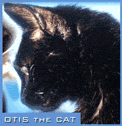Michelle Gadd—who heads global conservation for Walters Conservation, created and funded by philanthropists Mark and Kimbra Walter, and owner of White Oak Conservation, a 17,000-acre spread in northeastern Florida, which houses and cares for endangered and threatened species, among other animals—recounts how, at 19, she embarked on a three-month study abroad program in Africa…and ended up staying about 13 years.  Gadd briefly describes the research and fieldwork with elephants in Africa that constituted the core of work on her Master’s degree, and then her PhD thesis. She also notes she spent a number of years overseeing the U.S. Fish & Wildlife Service’s African elephant and African rhino programs. Gadd explains what White Oak Conservation is, and its mission, which includes providing a home for such endangered and threatened species as rhinos, okapis, bongos, and cheetahs, breeding many of those animals—some with the intention of returning them to the wild, some to be sold to zoos or other facilities, or exchanged with them. (White Oak also houses fauna native to its northeastern Florida locale, and devotes efforts to rehabilitating injured
Gadd briefly describes the research and fieldwork with elephants in Africa that constituted the core of work on her Master’s degree, and then her PhD thesis. She also notes she spent a number of years overseeing the U.S. Fish & Wildlife Service’s African elephant and African rhino programs. Gadd explains what White Oak Conservation is, and its mission, which includes providing a home for such endangered and threatened species as rhinos, okapis, bongos, and cheetahs, breeding many of those animals—some with the intention of returning them to the wild, some to be sold to zoos or other facilities, or exchanged with them. (White Oak also houses fauna native to its northeastern Florida locale, and devotes efforts to rehabilitating injured  Florida panthers, Gadd says.) But the core of the conversation, and chief reason for it, was to address the recently-announced plans that White Oak will provide a home for 34 elephants that had performed with the Ringling Bros. and Barnum and Bailey, until they were retired in 2016. They have been living in a 200-acre facility in Polk City, owned by Feld Entertainment, which operated Ringling Bros. But Gadd points out that White Oak has purchased the Polk City place, as well as the elephants, and is now caring for them—making the transition to protected contact, in which elephant and keeper do not share the same space; the use of bullhooks has ended, Gadd says–in preparation for relocating them to a 2500-acre habitat that’s being constructed for them at White Oak, featuring wetlands, grass, forest and 11 waterholes. Gadd went on to relate that of those 34 elephants set to move to White Oak, 16 are female, and of those, 13 will be made available for breeding. Some of the resulting offspring will be sent to zoos or other facilities that house captive animals; none will be released into the wild, Gadd says. White Oak is open to the public, and offers tours, but Gadd notes it’s unclear what arrangements will be made for seeing the elephants, especially during the pandemic, so it may involve virtual viewing and/or webcams. (Photo of two elephants: Stephanie Rutan/White Oak Conservation) (https://www.whiteoakwildlife.org, https://www.facebook.com/whiteoakwildlife, https://www.instagram.com/whiteoakconservation/)
Florida panthers, Gadd says.) But the core of the conversation, and chief reason for it, was to address the recently-announced plans that White Oak will provide a home for 34 elephants that had performed with the Ringling Bros. and Barnum and Bailey, until they were retired in 2016. They have been living in a 200-acre facility in Polk City, owned by Feld Entertainment, which operated Ringling Bros. But Gadd points out that White Oak has purchased the Polk City place, as well as the elephants, and is now caring for them—making the transition to protected contact, in which elephant and keeper do not share the same space; the use of bullhooks has ended, Gadd says–in preparation for relocating them to a 2500-acre habitat that’s being constructed for them at White Oak, featuring wetlands, grass, forest and 11 waterholes. Gadd went on to relate that of those 34 elephants set to move to White Oak, 16 are female, and of those, 13 will be made available for breeding. Some of the resulting offspring will be sent to zoos or other facilities that house captive animals; none will be released into the wild, Gadd says. White Oak is open to the public, and offers tours, but Gadd notes it’s unclear what arrangements will be made for seeing the elephants, especially during the pandemic, so it may involve virtual viewing and/or webcams. (Photo of two elephants: Stephanie Rutan/White Oak Conservation) (https://www.whiteoakwildlife.org, https://www.facebook.com/whiteoakwildlife, https://www.instagram.com/whiteoakconservation/)
ALSO: I spoke briefly with Mindy Weisberger, Senior Writer at Live Science, to discuss Fat Bear Week. As she did in her  Live Science story (https://www.livescience.com/fat-bear-week.html), she describes the yearly competition, in which the brown bears in Alaska’s Katmai National Park gorge themselves on as much salmon as possible in an extended pre-hibernation feast—and onlookers from across the country and beyond wager on which ursine contestant will pack on the most pounds by the end of the week, Sept. 30-Oct. 6. For those who might be critical of Fat Bear Week, or misunderstand its intent, Weisberger explains why those in Katmai and elsewhere consider this a positive event, evidence that nature is functioning as intended. Spoiler alert: At the end of our chat, we announced that this year’s winner was…Bear 747. (https://explore.org/fat-bear-week, https://www.livescience.com )
Live Science story (https://www.livescience.com/fat-bear-week.html), she describes the yearly competition, in which the brown bears in Alaska’s Katmai National Park gorge themselves on as much salmon as possible in an extended pre-hibernation feast—and onlookers from across the country and beyond wager on which ursine contestant will pack on the most pounds by the end of the week, Sept. 30-Oct. 6. For those who might be critical of Fat Bear Week, or misunderstand its intent, Weisberger explains why those in Katmai and elsewhere consider this a positive event, evidence that nature is functioning as intended. Spoiler alert: At the end of our chat, we announced that this year’s winner was…Bear 747. (https://explore.org/fat-bear-week, https://www.livescience.com )
COMEDY CORNER: John Mulaney’s “Horse In A Hospital” (http://www.johnmulaney.com)
MUSIC: Rebekah Pulley’s “Talking Animals Theme,” instrumentals
NAME THAT ANIMAL TUNE: We didn’t play “Name That Animal Tune” today.
AUDIO ARCHIVE:
Listen Online Now:



